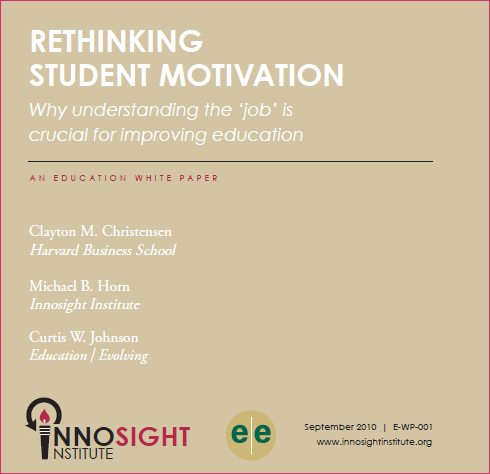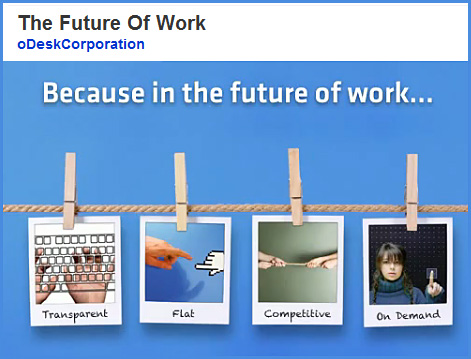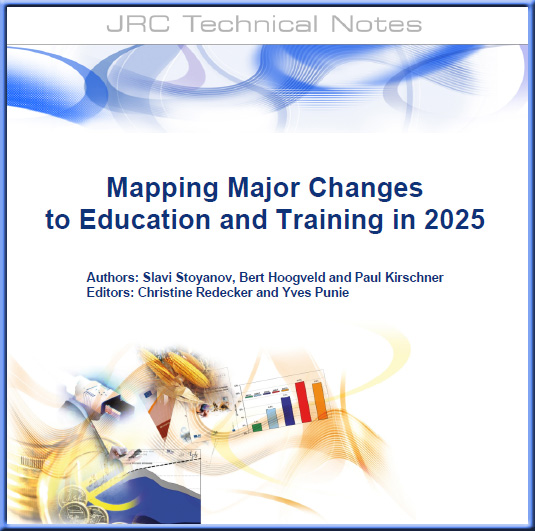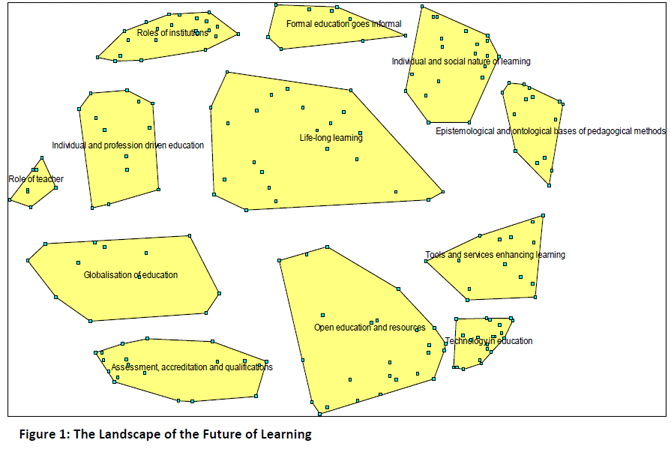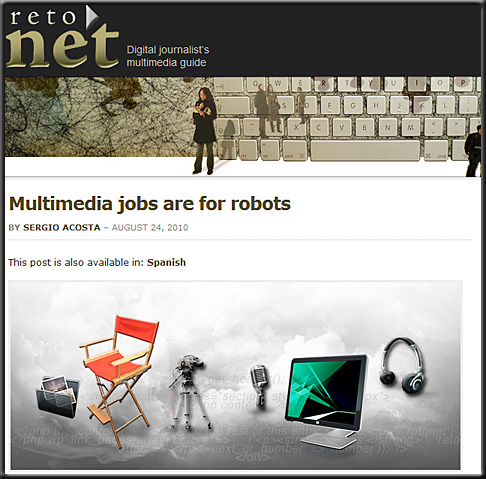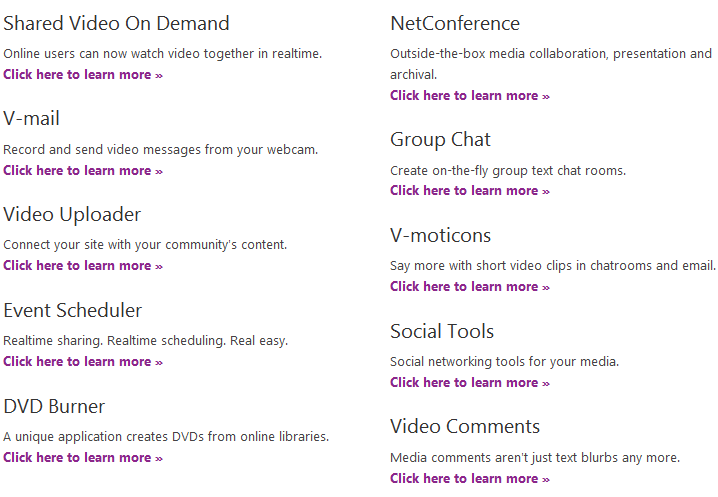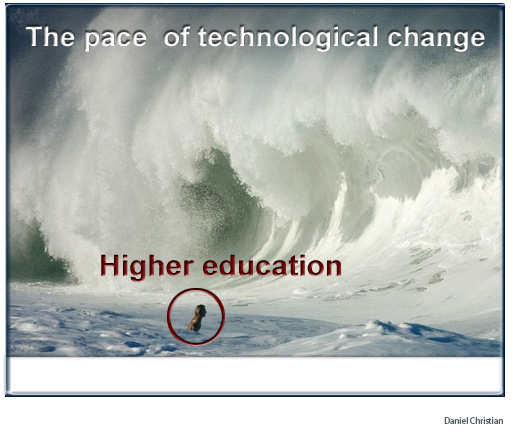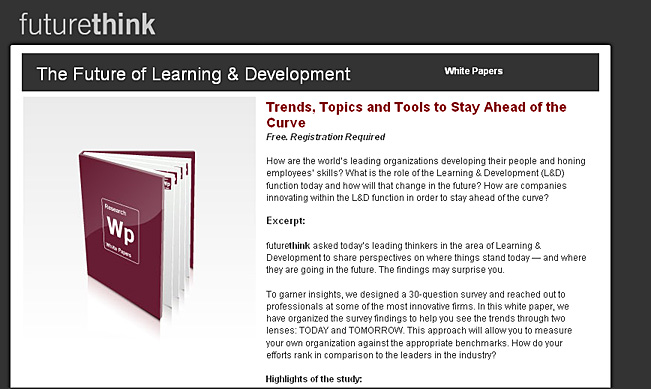A sharp video re: The Future of Work (though back from Dec 09, it’s well worth a look if you haven’t seen it — for those in higher ed as well as for those in the corporate/business world; by odesk.com)
.
Resource from:
free technology for teachers — by Richard Byrne
.
Related item from odesk.com’s blog:
“…oDesk saw more than 1 million hours worked online during the month of August (2010). Just in time for Labor Day here in the United States, this milestone shows just how far the working world has come since the holiday was first initiated in 1882, and marks an increase of 118% in hours worked on oDesk over the same period just last year. But a million is a big number, and a long time when you’re counting in hours. So, we tapped one of our 720,000 talented contractors to show you just how much can happen in one million hours.”
The Digital Landscape –What’s Next for News? — from spotlight.macfound.org
Harvards’s Nieman Reports weighs in on the future of journalism, including how young people are using technology as consumers and producers of information and how news organizations are looking to gaming as a way to engage audiences. Plus: evidence that journalism is not dying.
The new digital landscape, writes Melissa Ludtke, Neiman Reports editor, is “a place where game playing thrives and augmented reality tugs at possibilities. It’s where video excels, while the appetite for long-form text and the experience of ‘deep reading’ is diminished, and it’s where the allure of multitasking greets the crush of information.”
- The New New Journalism
- The New Journalism: Goosing the Gray Lady
What are these renegade cybergeeks doing at the New York Times? Maybe saving it. - Adam Webstbrook: Introducing: the journalist of the future
- Martin Belam: 7 ways the UK media scene resembles Doctor Who monsters
- Leah Betancourt: How Programmer/journalists are changing the news
- Mindy McAdams: Skills needed by today’s journalists
- 02 Creation – Videos: The state of the photojournalism and its future
30 under 30 — per Learning TRENDS by Elliott Masie – August 24, 2010.
#632 – Updates on Learning, Business & Technology.
55,106 Readers – http://www.masie.com – The MASIE Center
We have completed the assembly of the 30 Under 30 Learning Leadership Team for Learning 2010. We are proud to announce these high energy learning leaders (all under the age of 30) that will be leading sessions and helping to articulate a view of the future of learning. They include colleagues from Google, Verizon Wireless, Disney, Volkswagen, Farmers Insurance, General Mills, FM Global, IBM, Westinghouse and many more. Check out their aspirations about learning.
The future of the Internet — from SmashingMagazine.com by Dan Redding
The Internet is a medium that is evolving at breakneck speed. It’s a wild organism of sweeping cultural change — one that leaves the carcasses of dead media forms in its sizeable wake. It’s transformative: it has transformed the vast globe into a ‘global village’ and it has drawn human communication away from print-based media and into a post-Gutenberg digital era. Right now, its perils are equal to its potential. The debate over ‘net neutrality’ is at a fever pitch. There is a tug-of-war going on between an ‘open web’ and a more governed form of the web (like the Apple-approved apps on the iPad/iPhone) that has more security but less freedom.
Also see:
From DSC:
I very much relate to Dan Redding’s statement, “The Internet is a medium that is evolving at breakneck speed.”

.
…and, speaking of leaving things in the wake….here’s another graphic that comes to mind:
.
The Future of Libraries: Interview with Thomas Frey — from Thomas Frey, Senior Futurist at the DaVinci Institute, and Google’s top-rated futurist speaker

Example questions include:
Sloan – Unlike many futurists, you have stated that “libraries are here to stay.” Why?
Sloan – You’ve said that within 10 years the ink-on-paper publishing industry will not be a sustainable economic model. What will the new business model be?
Sloan – You have written and spoken about libraries becoming “Electronic Outposts.” What is an Electronic Outpost library?
Sloan – What is the “Empire of One” business model and why should libraries be interested in this trend?
Sloan – In the 2006 book The Long Tail, Wired magazine Editor Chris Anderson said, “When the tools of production are available to everyone, everyone becomes a producer.” What new roles and functions can libraries adopt to support producers?
Sloan – In addition to libraries, you write and speak about the future of business, education, government, and transportation. What trends in these areas do you think will have the greatest impact on the future of libraries?
The future of education will revolve around hyper-individualized learning, self-paced, organically generated content that is modality diverse, and available on-demand 24/7. Any topic, anywhere, anytime … it will be less dependent on teachers, less dependent on schools, and offer more personal control. Libraries have the potential for becoming the working laboratories for people creating new courseware.
Sloan – Over the past few years you have visited hundreds of libraries and spoken to many library groups across the country. What have you learned about libraries that you didn’t know prior to your visits?
Futures thinking for academic librarians: Higher education in 2025
Prepared by:
Dr. David J. Staley
Director of the Harvey Goldberg Center for Excellence in Teaching in the History Department of Ohio State University
Kara J. Malenfant
ACRL Scholarly Communications and Government Relations Specialist
June 2010
Executive Summary
For academic librarians seeking to demonstrate the value of their libraries to their parent institutions, it is important to understand not only the current climate. We must also know what will be valued in the future so that we can begin to take appropriate action now. This document presents 26 possible scenarios based on an implications assessment of current trends, which may have an impact on all types of academic and research libraries over the next 15 years. The scenarios represent themes relating to academic culture, demographics, distance education, funding, globalization, infrastructure/facilities, libraries, political climate, publishing industry, societal values, students/learning, and technology. They are organized in a “scenario space” visualization tool, reflecting the expert judgment of ACRL members as to their expectations and perceptions about the probability, impact, speed of change, and threat/opportunity potential of each scenario. Finally, the study draws out implications for academic libraries.
For scenarios which have been identified as high impact with a high probability of occurring, it is incumbent upon library directors and those who set strategic agendas for academic libraries to plan to act now upon these scenarios. This report reinforces the notion that academic libraries are part of a larger ecosystem, and librarians should be consistently scanning the environment to look for signs of the changes that may come. It includes an appendix with a suggested activity to engage library colleagues in stretching your imaginations and considering possible futures. This can build capacity to engage in strategic thinking and planning, supporting librarians in making better decisions now that can address a variety of possible futures.
Highlights of the study:
- 74% see the influence of L&D expanding in the immediate future (0-2 years)
- Almost 50% believe their training offerings will grow in the next two years
- Online learning is set to take center stage, with eLearning (62% will offer it), collaborative training (62%) and webinars (55%) being the formats identified as necessary for success
- 85% agreed/strongly agreed that the majority of learning will be collaborative going forward
- 100% agreed/strongly agreed that learning in the future will be done in short timeframes, using ‘micro modules’ to provide more focused learning and achieve better results
The future of textbook publishing in the Digital Age: New publisher workflows — from the xplanation by Rob Reynolds









